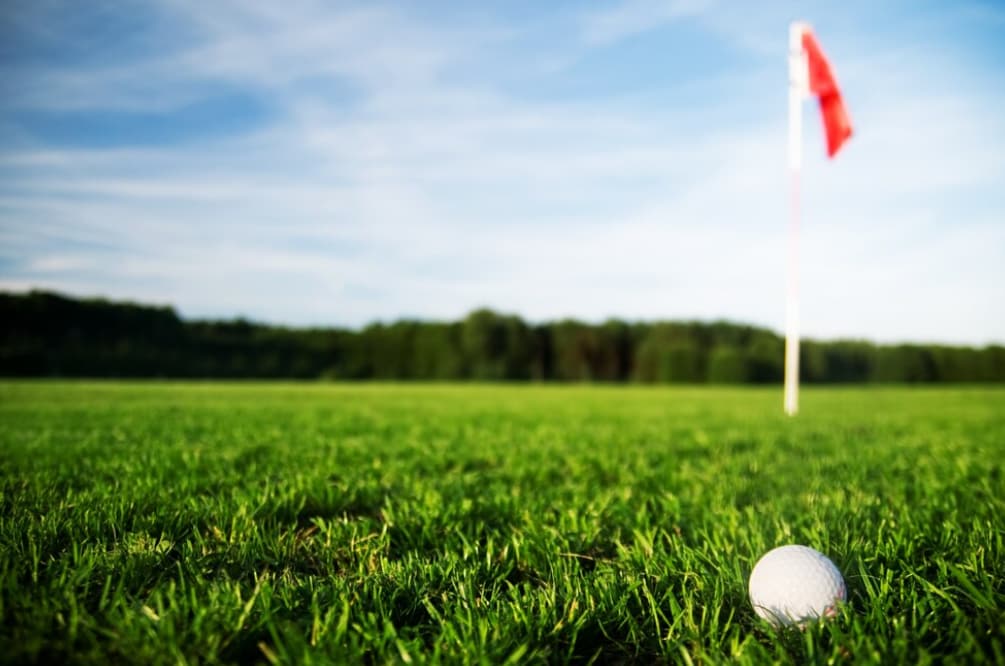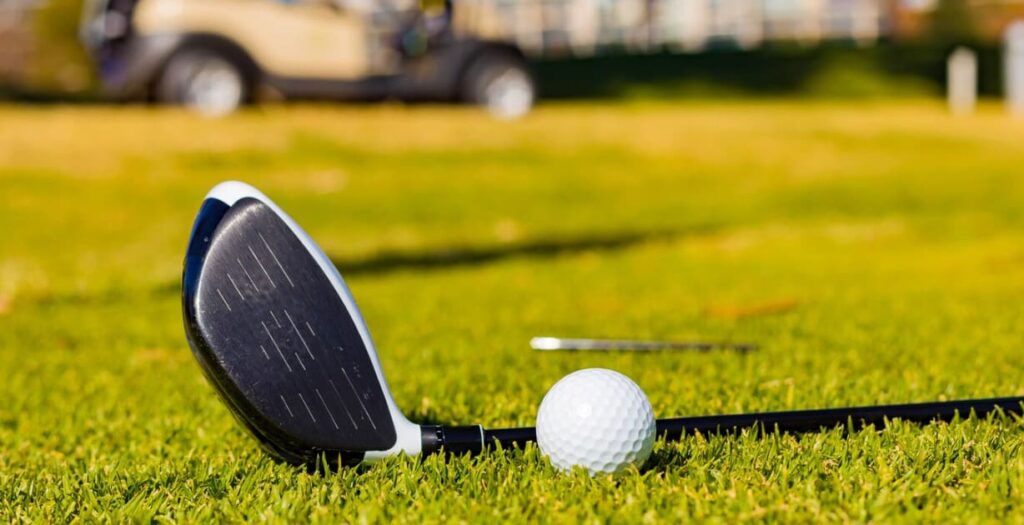Golf is a game of precision and technique. One such fundamental aspect that is often overlooked by golfers is how the golf clubface should look at the address. This seemingly small detail can significantly impact your game, affecting everything from your swing path to your shot’s accuracy. This guide aims to shed light on this key aspect, helping golfers establish a strong foundation for better gameplay.
Understanding the correct positioning of the clubface at address is crucial for golfers of all ages, particularly seniors, who can refer to the Senior Golf Distance Chart to optimize their swing and maximize distance based on their unique capabilities.
The Significance of the Clubface At Address
Properly orienting the face of your golf club when preparing to swing can significantly transform your game. When the face of the club is precisely parallel to the golf ball, it greatly enhances the likelihood of executing a strong, precise, and direct shot aimed at the target. Gaining insight into the appearance of your clubface as you position yourself can address and rectify problems related to your initial stance and direction, leading to a noticeable enhancement in your overall golfing skills.
Understanding the Clubface Position
Analyzing the clubface at address involves two perspectives — the top-down view and the front-on view. Each gives invaluable insights into the clubface’s position, enabling the golfer to make necessary adjustments for improved gameplay.
Top-Down
- From a bird’s-eye view, the ideal club face rests with its center flush against the turf, and its grooves aiming straight at your intended target. This angle can reveal if the club face is open or closed in relation to your stance and target;
- The image below may not capture the perfect angle (as snapping a photo from the actual eye viewpoint can be tricky), especially since the shaft should typically tilt forward. However, it should give you a general idea about the alignment of the club face;
- Depending on the specific shot you’re aiming for, there might be occasions when the club face should be slightly open or slightly closed at the start. Nevertheless, generally, from this top-down perspective, you’re aiming for the club face to be square in line with your feet and body.
Down-The-Line
- Capturing a side-on photo of your stance—facing away from the target—can reveal a lot about the club head’s position and its lie angle. Ideally, the club should rest evenly on the ground, with neither the toe nor the heel elevated;
- An excessively raised toe or a heel that hovers above the ground could indicate an inappropriate lie angle for the golfer. Adjusting the lie angle is a straightforward task when done by a trained club fitter;
- For a right-handed golfer, if the heel is making more contact with the ground, this means the club face is angled left of the target, potentially leading to a shot that veers left. Conversely, if the toe is overly grounded, the club face aims right, which could send the ball off to the right.
The Impact of Clubface At Address

A correct clubface position at address is crucial as it affects various areas of the golf game. Failing to align your clubface properly with the target may result in off-target shots despite a perfect swing.
Moreover, many golfers use their clubface angle to align their stance, including feet, hip, and shoulder angles. Misalignment at this stage can severely affect the outcome of the shot. In golf, precision is key, and every angle counts.
Checking Clubface Alignment
Having a square clubface alignment is essential for hitting straight shots. One useful way to check this is to use a flat surface like a door frame or a piece of lumber. Addressing this as if it was the golf ball allows for a good practice drill to cement what a square clubface looks like.
How To Make Adjustments
Getting the clubface properly aligned when addressing the ball is essential for hitting your target accurately. Should the clubface be out of alignment, it’s important to rectify it. Start by repositioning the clubface so it’s perpendicular to your intended line of play. Next, ensure your stance is correctly aligned by setting your feet, hips, and shoulders in a line parallel to the direction you want the ball to travel. Such an arrangement sets you up for the ideal straight shot.
How To Monitor Your Progress

Monitoring your progress is crucial in ensuring your adjustments are effective. Documenting your set up and swings using a camera or smartphone can provide a visual understanding of your clubface position at address. Review these regularly to track your progress and make necessary changes.
Perfecting the position of your clubface can greatly improve your performance on the golf course, infusing your shots with both strength and finesse. It’s essential to remember that golf demands meticulousness, and the minutiae can make all the difference. By becoming aware of and continually checking the placement of your clubface when addressing the ball, you can enhance the way you align, your swing technique, and the precision of your shots, thereby elevating your overall golfing skills.
Conclusion
In conclusion, understanding the position of your golf clubface at the address is a powerful tool that can elevate your game to extraordinary heights. This guide has provided insights into how to achieve the perfect positioning, analyzing it from top-down and front-on perspectives, along with highlighting the importance of a square clubface. By incorporating these insights into your practice sessions and constantly monitoring your progress, you will undoubtedly see significant improvements in your accuracy, power, and precision, ultimately transforming your golfing prowess.
